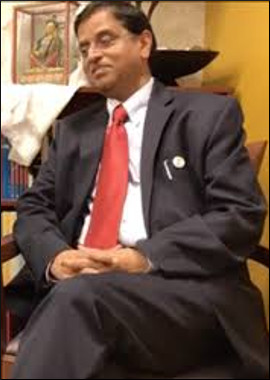|
|
|

|
Direct farm income payout to start before third week of February: Garg
|
|

|
|
| Top Stories |
 |
|
|
|
SME Times News Bureau | 12 Feb, 2019
The first payout under the direct income scheme for farmers announced
in the Interim Budget may be made even before the third week of
February, says Economic Affairs Secretary Subhash Chandra Garg who
sought to dismiss fears of land records holding up payments under the
scheme.
"Very serious preparations are going on. Some states are
ready with their list. You might actually see the first payout in some
states even before the date of February 22 as stated by the agriculture
minister," he told IANS in an interview.
He said different
states are in different stages of preparedness but some states that have
their lists ready can be uploaded in a couple of days. However, in some
states where the data is not adequate, the money transfer may take a
little longer.
"Data in some states are very accurate. Then
there are some states that will need to do some marrying of the
databases. They might need to have a field confirmation but all the
states have data of operational holdings which are marginal and small.
That is the starting point to build the family database," he said.
On
February 1, Finance Minister Piyush Goyal, while presenting the Interim
Budget, announced direct income support of Rs 6,000 to all farming
families having land up to two hectares, or five acres, in three equal
instalments each year.
As the scheme, Pradhan Mantri Kisan
Samman Nidhi (PM-KISAN), is effective from December 1, 2018, the first
payment of Rs 2,000 per farming household for the four-month period
ending March 31, 2019 is due before the end date.
Refuting
criticism that the scheme reaches out only to a small fraction of
people, he said it actually covers two-thirds of the rural population as
an additional benefit and that there are other schemes taking care of
the balance one-third population.
"It's a national scheme
announced for all farmers living anywhere in the country... There are
about 18 crore households in the rural areas. This scheme targets 12 to
12.5 crore of the households/families. So, it targets roughly about
two-third families in the rural areas. It is a big chunk of the people,"
he said.
Garg said the distress which has been captured across
the country is a general price question where most of the crops are not
giving returns to the farmers. This, he said, is being reflected in the
low food inflation, which is actually negative.
He said the
direct income support is not the only scheme for farmers. It is in
addition to all other existing benefits like minimum support price (MSP)
that pays 50 per cent more than the cost of produce to farmers. One has
to take a holistic view of the entire package of benefits that is aimed
to address the farm distress, he said.
"This is not the only
benefit which is being made available. This is topping up as an
additional benefit. They are getting lot of benefits through subsidised
inputs whether it is fertilisers, electricity, seed or loans. Those
continue. None of them have been withdrawn," he said.
Further,
Garg said the direct income support is not related to any other
performance unlike MSP which requires a farmer to have a surplus to sell
and subsidised farm inputs that may not benefit small farmers as much.
And,
for the balance one-third of the rural population that may be landless
and may have less employment, Garg said the government provides minimum
100-days job guarantee under the MGNREGA scheme.
"These landless
people also migrate to cities for working as labourers in construction
sector during the off-season period. For such people in the unorganised
sector, the government announced a pension scheme of Rs 3,000 per month.
This is a holistic measure, a complete package and does not ignore
anyone," he said.
|
|
|
| |
|
|
|
|
|
|
|
|
|
|
|
|
|
|
| |
| Customs Exchange Rates |
| Currency |
Import |
Export |
US Dollar
|
₹91.25
|
₹89.55 |
UK Pound
|
₹122.85
|
₹118.85 |
Euro
|
₹107.95
|
₹104.3 |
| Japanese
Yen |
₹59 |
₹57.1 |
| As on 29 Dec, 2025 |
|
|
| Daily Poll |
 |
 |
| What is your biggest hurdle to scaling right now? |
|
|
|
|
|
| Commented Stories |
 |
|
|
|
|
|
| |
|